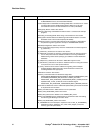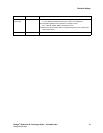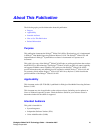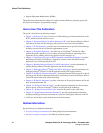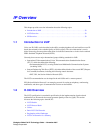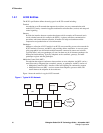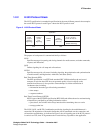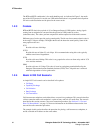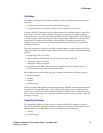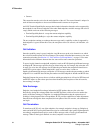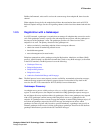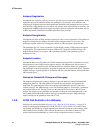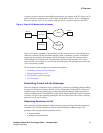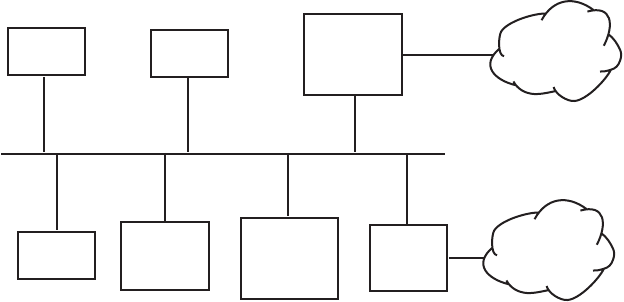
30 Dialogic
®
Global Call IP Technology Guide — November 2007
Dialogic Corporation
IP Overview
1.2.1 H.323 Entities
The H.323 specification defines the entity types in an H.323 network including:
Terminal
An endpoint on an IP network that supports the real-time, two-way communication with
another H.323 entity. A terminal supports multimedia coders/decoders (codecs) and setup and
control signaling.
Gateway
Provides the interface between a packet-based network (for example, an IP network) and a
circuit-switched network (for example, the PSTN). A gateway translates communication
procedures and formats between networks. It handles call setup and teardown and the
compression and packetization of voice information.
Gatekeeper
Manages a collection of H.323 entities in an H.323 zone controlling access to the network for
H.323 terminals, Gateways, and MCUs and providing address translation. A zone can span a
wide geographical area and include multiple networks connected by routers and switches.
Typically there is only one gatekeeper per zone, but there may be an alternate gatekeeper for
backup and load balancing. Typically, endpoints such as terminals, gateways, and other
gatekeepers register with the gatekeeper.
Multipoint Control Unit (MCU)
An endpoint that supports conferences between three or more endpoints. An MCU can be a
stand-alone unit or integrated into a terminal, gateway, or gatekeeper. An MCU consists of:
• Multipoint Controller (MC) – handles control and signaling for conferencing support
• Multipoint Processor (MP) – receives streams from endpoints, processes them, and
returns them to the endpoints in the conference
Figure 1 shows the entities in a typical H.323 network.
Figure 1. Typical H.323 Network
PSTN
Internet or
Intranet
Gateway
Router
Gatekeeper
MCU
Terminal
Terminal
Terminal
LAN



